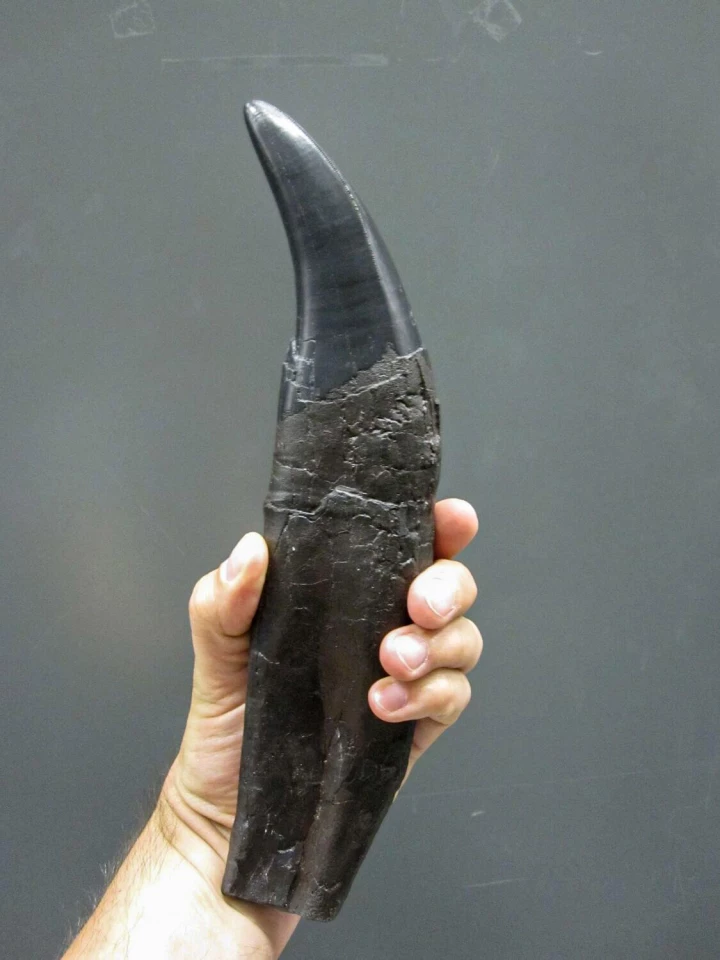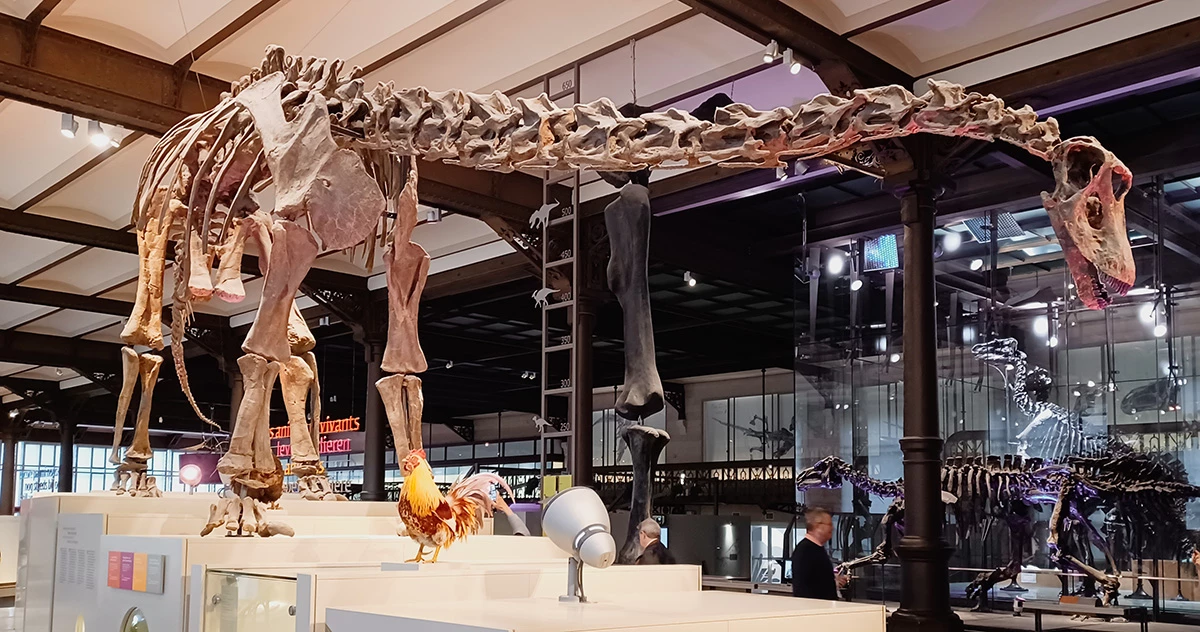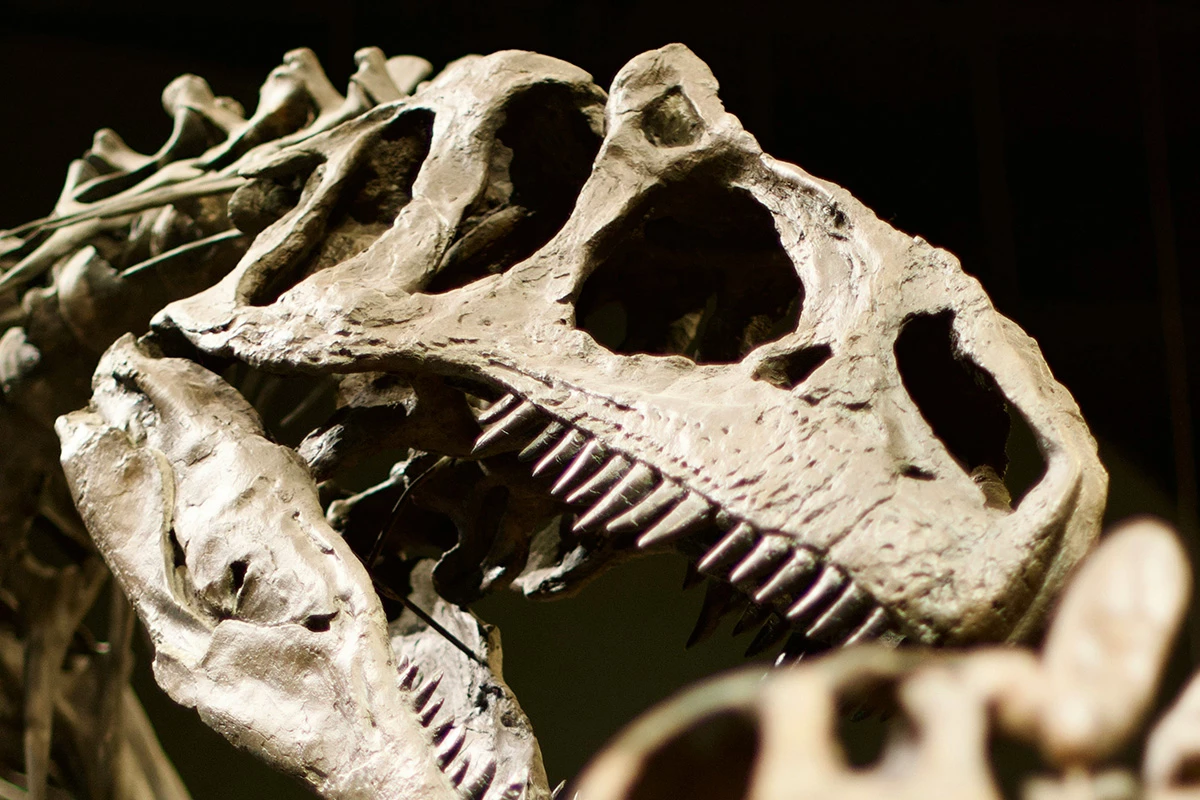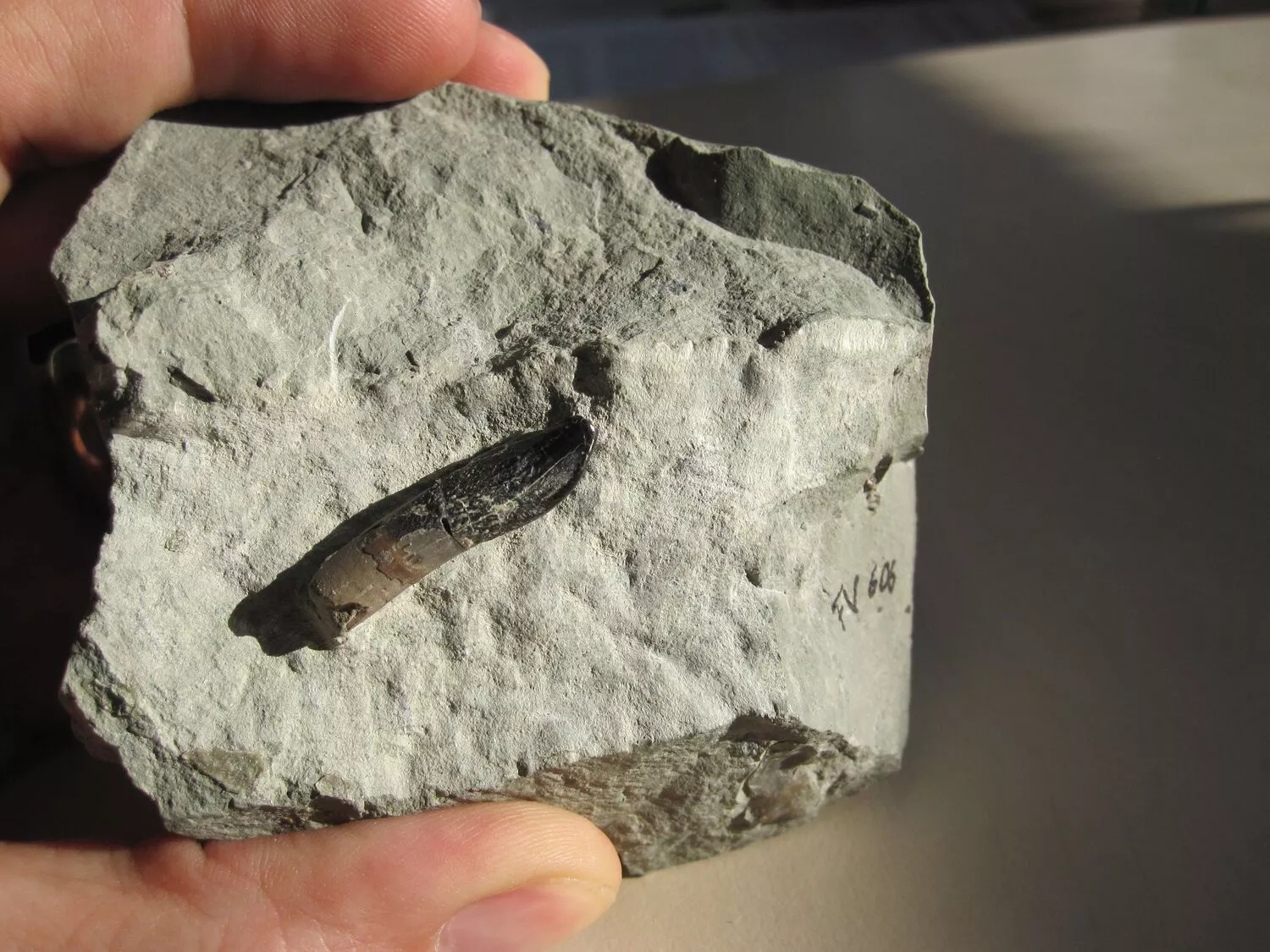Fossilized dinosaur teeth can reveal a lot more than just how these creatures ate and who they were related to – they can also tell us what the air was like in prehistoric times. As it turns out, humans might have found it hard to breathe if we were around the same time as dinosaurs, because there was a lot more carbon dioxide in the atmosphere than you'd expect.
That's from a fascinating study by a team of geochemists and geologists at the University of Göttingen in Germany. The researchers looked at enamel powders off of teeth from several dinosaurs found in North America, Africa, and Europe, in which they found isotopic traces of oxygen molecules they breathed as far back as 150 million years ago.
A strange place to look for an indicator of air quality, I know. But since tooth enamel is extremely stable, it can preserve tiny amounts of the air vertebrates breathe and incorporate into their body water pool through biomineralization. This allowed the scientists to deduce atmospheric composition from all those millions of years ago.

What they discovered was hard to take in, literally. CO2 levels reached roughly 750 parts per million in the late Cretaceous period, and around 1,200 parts per million in the late Jurassic period. The latter figure works out to about four times more CO2 than preindustrial times. The CO2 reading observed in the Cretaceous period is also far greater than the 430 parts per million we see in the atmosphere today.
The team also noticed a strange composition of oxygen isotopes in the teeth of two dinosaurs – a Tyrannosaurus Rex and a long-necked sauropod called Kaatedocus siberi. This indicated some sort of spike in the amount of CO2 in the air, which could be the result of volcanic eruptions. The researchers were also able to determine that the total photosynthesis from plants around the planet in the Mesozoic era was more than twice what we see on Earth today.

These findings could help usher in a novel way to look at how our planet and its various ecosystems have changed over periods of time. "[Our method] opens up the possibility of using fossilized tooth enamel to investigate the composition of the early Earth's atmosphere and the productivity of plants at that time," said Dr. Dingsu Feng, lead author on the paper that appeared in PNAS this week. "This is crucial for understanding long-term climate dynamics."
ScienceAlert noted that the team intends to use its analysis technique on dino chompers from a global extinction event dating back 252 million years called The Great Dying. It could unlock insights into this period that saw nearly all of the planet's animals wiped out, and what came after.







